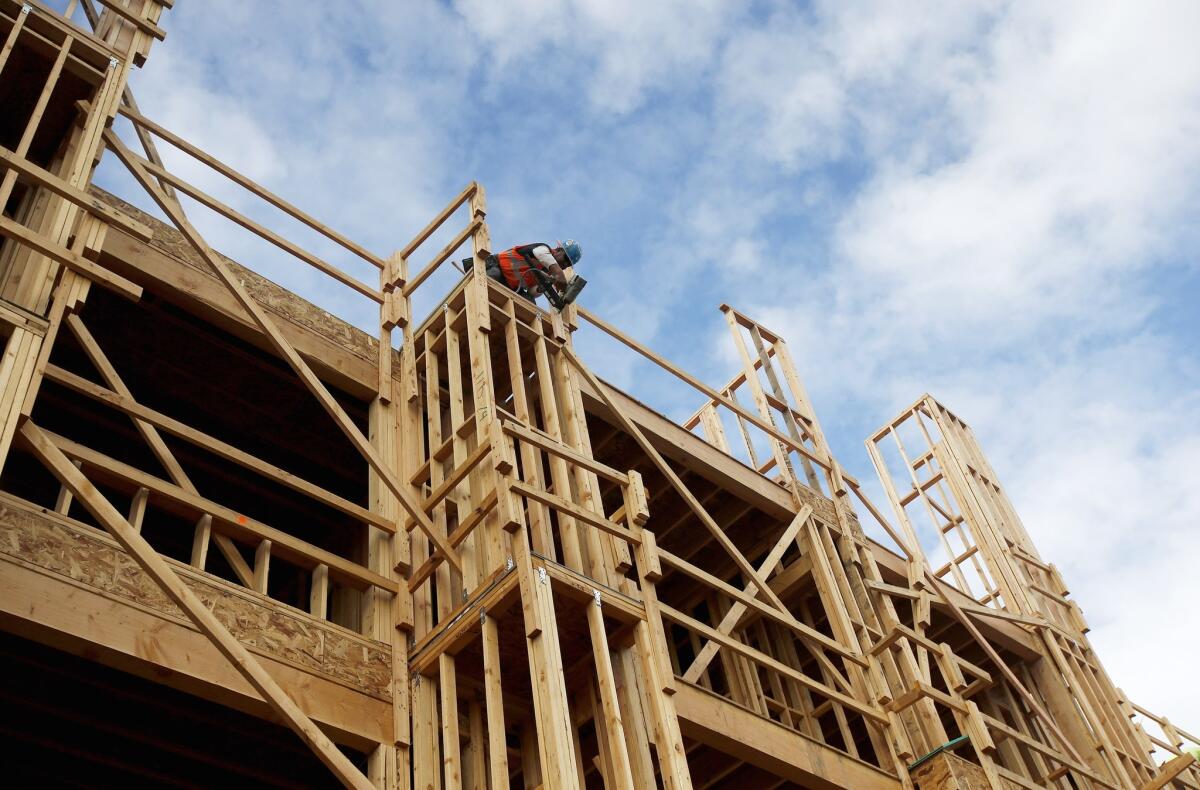Climate change prevention is losing to sprawl in San Diego County

- Share via
Urban sprawl is testing California’s commitment to fighting climate change.
Over the last decade, state leaders have passed laws prodding local governments to plan housing and transportation projects so people don’t have to drive as much, thus cutting the greenhouse gas emissions responsible for global warming. Reducing the need to drive has other benefits, too, including cutting unhealthy smog and easing traffic congestion.
On paper, cities and counties are supposed to building more dense, walkable, bikeable, transit-friendly communities close to existing jobs and services. In practice, local governments continue to rubber-stamp far-flung housing developments that will inevitably lead to more driving, more congestion and more planet-warming emissions.
Now, state Atty. Gen. Xavier Becerra and environmental groups are trying to make it harder for cities and counties to skirt the law. Becerra recently joined a lawsuit seeking to block San Diego County from letting developers buy credits from carbon-reduction projects anywhere in the world to offset the greenhouse gas emissions created by new housing developments far from city centers. Becerra wants developers to adopt measures that reduce driving and vehicle emissions here in the communities where their projects are built, rather than allowing them to pay to reduce emissions in other states or countries.
The San Diego plan ignores restraints on sprawl “in favor of providing an easy solution for developers that kicks the can down the road and saddles a future generation of Californians with the cost of climate change,” Becerra’s office wrote in the filing.
The lawsuit stems from a Climate Action Plan adopted by the San Diego County Board of Supervisors to set a blueprint for meeting greenhouse gas emission targets. But its permissive approach to offsets allowed the county to approve seven new sprawling developments with roughly 10,000 new homes. The developers committed to installing solar panels and electric-vehicle chargers, but they still needed to buy credits to offset nearly 80% of the emissions that would be created by the projects, the San Diego Union Tribune reported last year.
The Sierra Club sued to block the plan, arguing that the use of offsets undermines the county’s pledge to limit emissions within its jurisdiction. A San Diego County Superior Court judge agreed with the environmental group and ordered the county to redo the plan. The county is appealing the decision, which prompted Becerra and other environmental groups to join the fight against San Diego’s plan.
The county and the building industry argue that offsets should be allowed because climate change is a global problem and it doesn’t matter where you cut emissions, whether it be by capturing methane at a Central Valley dairy or by distributing solar cookstoves in India.
But critics of the program have also concerns about whether the offsets — especially credits from overseas projects — will deliver lasting and enforceable emissions reductions. A housing development will last many decades. How long will a solar cookstove last? The rampant use of offsets also lets developers buy their way out of building more sustainable projects that could deliver real and lasting environmental benefits for air quality, transportation and for communities.
More to Read
A cure for the common opinion
Get thought-provoking perspectives with our weekly newsletter.
You may occasionally receive promotional content from the Los Angeles Times.









